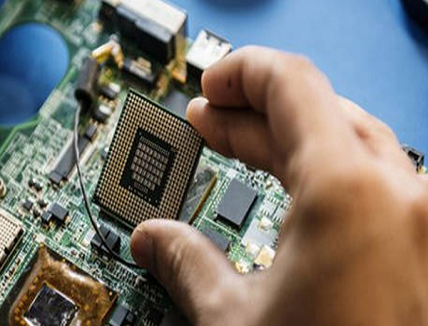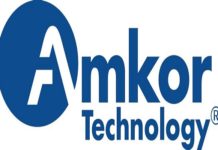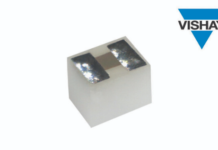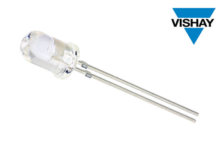
Technological advances semiconductor metrology and inspection have been driven by teh constant demand for smaller, faster, and more reliable semiconductor devices. Applied Materials Inc. established a collaborative engineering center in Bangalore, India, which focuses on development and commercialization of technologies for semiconductor manufacturing equipment. At the same time, KLA Corporation in partnership with imec developed the talent base and infrastructure to boost the advanced semiconductor applications for autonomous mobility and electrification. In the meantime, Thermo Fisher Scientific Inc. introduced a new generation, fully automated (S)TEM metrology solution to enhance productivity and data quality assurance in semiconductor manufacturing.
Semiconductor metrology is the science and technology of measuring and analyzing the properties of semiconductor materials and devices. It encompasses various techniques and tools used to characterize parameters such as electrical, optical, structural, and chemical properties of semiconductors. This includes methods like scanning electron microscopy (SEM), atomic force microscopy (AFM), X-ray diffraction (XRD), ellipsometry, and spectroscopic techniques. Metrology plays a crucial role in semiconductor manufacturing, ensuring quality control, process optimization, and the development of advanced semiconductor devices with precise performance characteristics.
Semiconductor inspection is a critical aspect of the manufacturing process that involves examining semiconductor materials, components, and devices to ensure quality, reliability, and performance. It encompasses various techniques and methods aimed at detecting defects, flaws, and irregularities in semiconductor wafers, chips, and packaged devices. Inspection is performed at different stages of the semiconductor manufacturing process, including wafer fabrication, device assembly, and final testing.
Semiconductor inspection techniques vary depending on the specific requirements of the manufacturing process and the characteristics of the materials and devices being inspected. Common inspection methods include visual inspection, optical microscopy, scanning electron microscopy (SEM), atomic force microscopy (AFM), X-ray inspection, and various types of metrology techniques.
Technological advances in semiconductor metrology and inspection
Technological advances semiconductor metrology and inspection have been driven by teh constant demand for smaller, faster, and more reliable semiconductor devices. Some notable advances include –
- Nanometrology – with the continuous miniaturization of semiconductor devices, nanoscale metrology techniques have become essential. This includes advancements in scanning probe microscopy (SPM) techniques like atomic foce microscopy (AFM) and scanning tunneling microscopy (STM), enabling high resolution imaging and measurement at the nanoscale.
- Multi-model metrology – integration of multiple metrology techniques into a single system allows for comprehensive characterization of semiconductor materials and devices. For example, combining optical, electrical, and structural measurements provides a more complete understanding of device performance and reliability.
- In-line and in-situ inspection – real time, in-line, and in-situ inspection techniques have become increasingly important for process monitoring and control in semiconductor manufacturing. Techniques like optical scatterometry, optical critical dimension (OCD) metrology, and optical emission spectroscopy (OES) enable rapid and non-destructive monitoring of semiconductor fabrication processes.
- Machine learning and artificial intelligence – utilization of ML and AI algorithms has revolutionized semiconductor metrology and inspection. These techniques enable automated data analysis, pattern recognition, and defect detection, improving efficiency and accuracy in semiconductor manufacturing.
- 3D metrology – as semiconductor device architectures become more complex, 3D metrology techniques have become essential for accurately characterizing device structures and features. Advanced 3D imaging techniques, such as confocal microscopy and X-ray tomography, provide detailed three-dimensional information for process optimization and failure analysis.
- Materials characterization – advancements in materials characterization techniques, such as X-ray photoelectron spectroscopy (XPS), transmission electron microscopy (TEM), and secondary ion mass spectrometry (SIMS), enable precise analysis of semiconductor material composition, dopant distribution and interface properties.
In a nutshell, these technological advances in semiconductor metrology and inspection contribute to the continuous improvement of semiconductor manufacturing processes, leading to the development of more advanced and reliable semiconductor devices.
Current market scenario and future scope
According to a report published by Allied Market Research, the global semiconductor metrology and inspection market size is registered to reach $7.3 billion with a considerable CAGR from 2022 to 2031. The Asia-Pacific region is currently holding the highest market share and is anticipated to dominate the market during the forecasted period.
With this drift on board, many industry players are adopting business strategies such as new product launch, partnerships, collaborations, acquisitions, and joint venture in order to stay competitive in the market. For instance, Applied Materials Inc., the largest supplier of technologies for HI with optimized chipmaking systems spanning etch, physical and chemical vapor deposition (PVD), electroplating, chemical mechanical polishing (CMP), annealing, and surface treatments, has recently introduced materials, technologies, and systems that help chipmakers integrate chiplets into advanced 2.5D and 3D packages using hybrid bonding and through-silicon vias (TSVs).
Similarly, Applied Materials Inc. established a collaborative engineering center in Bangalore, India, which focuses on development and commercialization of technologies for semiconductor manufacturing equipment. This establishment is expected to shower lucrative opportunities for India to play an expanded role in the global chip ecosystem.
At the same time, KLA Corporation in partnership with imec developed the talent base and infrastructure to boost the advanced semiconductor applications for autonomous mobility and electrification. This partnership is helping move the automotive industry forward by bringing relevant expertise to identify and manage programs for automotive industry, as well as talent development and recruitment.
In the meantime, Thermo Fisher Scientific Inc. introduced a new generation, fully automated (S)TEM metrology solution to enhance productivity and data quality assurance in semiconductor manufacturing. Such initiatives by key market players are contributing to the growth of the market in more than one way.
Author’s Bio – Suchita Gupta is an explorer, musician and content writer. While pursuing MBA, she found that nothing satisfies her more than writing on miscellaneous domains. She is a writer by day, and a reader by night. Besides, she can be found entertaining her audience on social media platforms. Find her on LinkedIn & Instagram.
















